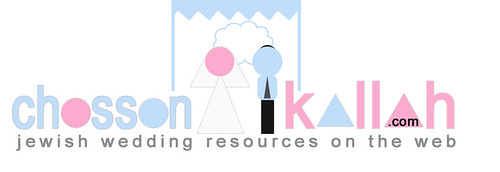According to the Talmud, only the man and the woman united compose a complete human being. As these two parts unite and enter a new stratum of their existence, some of the old gets erased. The Talmud says that when a person gets married his sins are corked. (Yevamos 63b) Thus the day of ones wedding is also a personal Yom Kippur.
As on Yom Kippur, both the chosson and kallah fast. In this case, from dawn until after the completion of the marriage ceremony; although some fast only half a day so as not to be too weak for the wedding. And at the ceremony, the chosson wears a kittel, the traditional white robe worn on Yom Kippur.
Kabbalat Panim
It is customary for the chosson and kallah not to see each other for the week preceding the wedding. Separate receptions, called Kabbolas Panim, are held just prior to the wedding ceremony.
The chosson’s reception is also called the Tisch (Yiddish for table). The signing of the Tannaim and the Kesubah take place at the Tisch.
Badeken
Next comes the badeken, the veiling of the kallah by the chosson. The chosson, accompanied by family and friends, proceeds to the kallah's reception room and places the veil over her face. A tender ceremony that perhaps dates back to the Talmudic period, the Bedeken serves as the first of many actions by which the groom signals his commitment to clothe and protect his wife. It is reminiscent of Rebecca covering her face before marrying Isaac. According to some opinions the Badeken may even be considered as Chuppah. (Chuppah means covering)




No comments:
Post a Comment